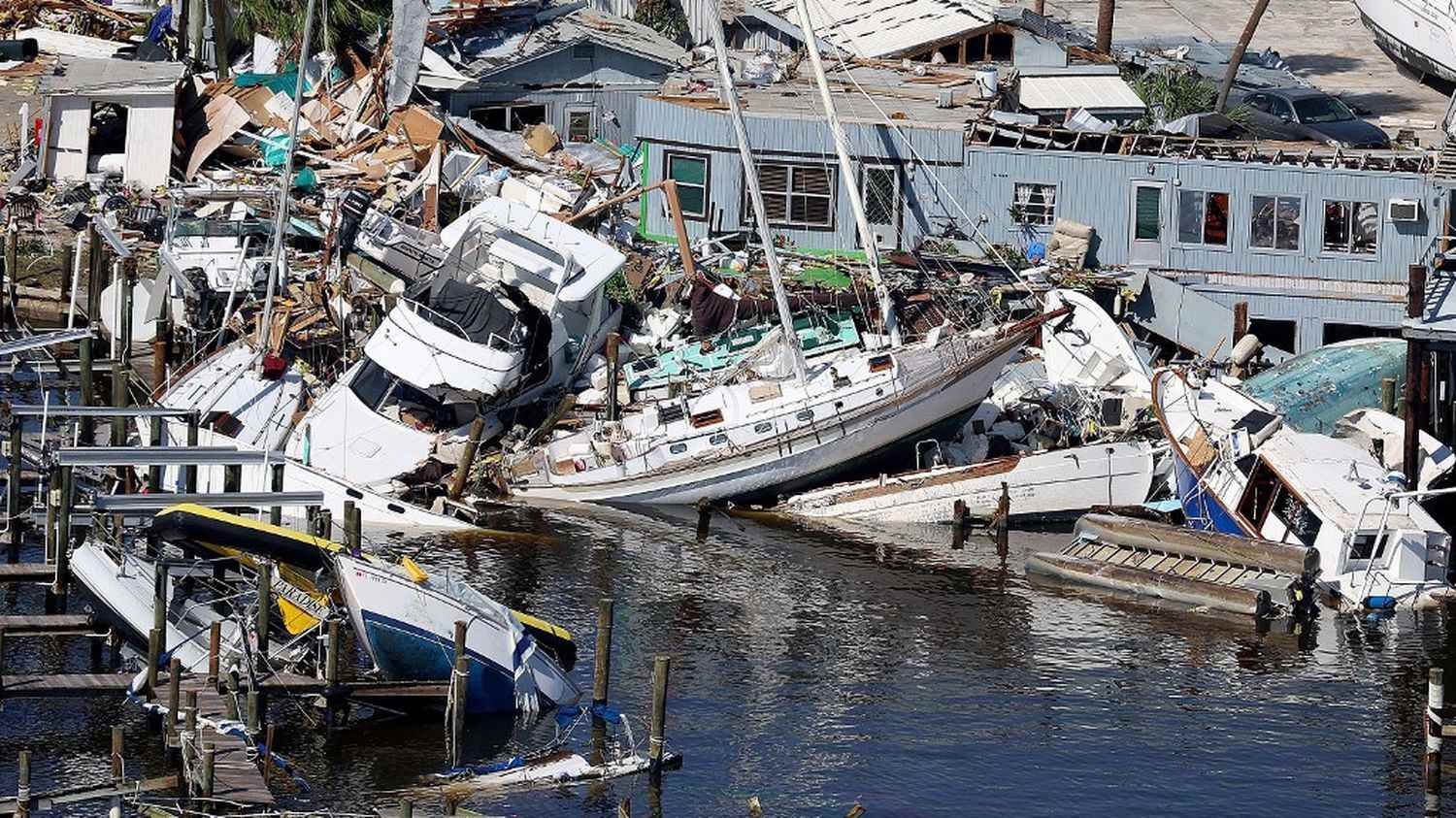Houses blown or under water, damaged infrastructure, businesses and farms at a standstill… Hurricane Ian, which devastated part of the Florida coast on Wednesday September 28, will weigh on American growth, cost tens of billions of dollars to insurers in Florida and leave many homeowners struggling uninsured.
The assessment of the extent of the devastation is still very preliminary, as the hurricane hit the coast of South Carolina on Friday, September 30. But it is already established that “The hurricane is expected to severely disrupt economic activity over ten days, with power cuts, flight cancellations, suspension of energy production, impact on farms, especially oranges”lists Gregory Daco, economist for the firm EY-Parthenon.
Ian should ultimately weigh on Florida’s gross domestic product by 6% in the third quarter and on that of the United States by 0.3%, estimates the specialist. As with all natural disasters, this economic impact will gradually diminish, especially when “a reconstruction effort in terms of port, road and residential infrastructure”, explains the economist to AFP. But this effect “takes place over several years”.
In the shorter term, wind-related losses on residential and commercial properties should reach insurers between 22 and 32 billion dollars while losses related to floods could cost 6 to 15 billion dollars, calculated the specialized firm CoreLogic. . “This is the costliest storm in Florida since Hurricane Andrew made landfall in 1992”a CoreLogic official commented in a statement on Thursday.
The rating agency Fitch, for its part, estimates the insured losses at between 25 and 40 billion dollars in Florida, an amount which could rise depending on the impact of Ian on the states further north. Its counterpart S&P Global Rating puts forward a figure of 30 to 40 billion dollars. For the firm Moody’s Analytics, losses for insurers could reach 45 to 55 billion dollars, and the economic activity lost in Florida amount between 7 to 10 billion.
By taking an average estimate adjusted for inflation (46 billion), it would enter the top 10 of the most costly hurricanes in the United States, according to the firm’s calculations, behind in particular hurricanes Katrina in 2005 (160 billion), Harvey (124 billion) or Maria (111 billion) in 2017.
These initial estimates do not take into account buildings without flood insurance, which represent the vast majority of real estate in Florida. According to data from the Milliman firm transmitted to AFP on Friday, only 18.5% of the houses in the counties subject to an evacuation order as the hurricane approaches have insurance taken out with the public body in charge of provide this kind of coverage (National flood insurance program). Very few private insurance companies offer this option.
